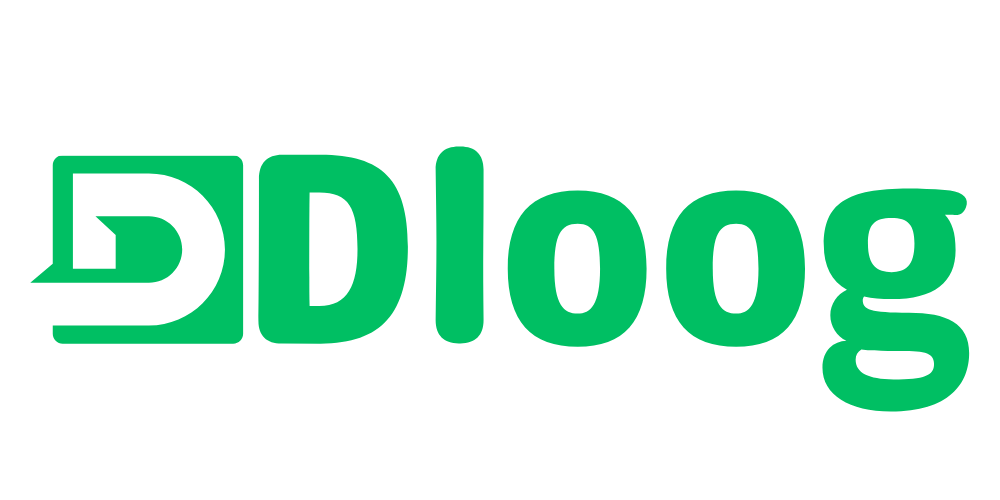Welcome to our blog, where we delve into the exciting world of consumer trends and global commerce. Today, we’re exploring a topic that sparks curiosity and drives innovation: the top best high-demand products in the world. From cutting-edge tech gadgets to timeless essentials, we’ll uncover the items that captivate markets and shape economies worldwide. Join us on this journey as we uncover the trends, insights, and stories behind the products that define our modern era.
Skin care
In today’s consumer-driven market, certain products stand out due to their high demand and popularity. Understanding the factors behind this demand is crucial for businesses looking to capitalize on market trends and consumer preferences. Among the most sought-after products worldwide are those in the skincare industry.
Overview of the Skin Care Industry – best high-demand products
The skincare industry has experienced remarkable growth in recent years, fueled by increasing awareness of skincare routines and the desire for healthier, youthful-looking skin. Factors such as pollution, stress, and lifestyle changes have contributed to the rising demand for skincare products.
Popular Skin Care Products
The market for skincare products is diverse, catering to various skin types and concerns. Some of the most popular products include cleansers and face washes, moisturizers, sunscreens, serums and treatments, face masks, eye creams, and exfoliants. Each serves a specific purpose in maintaining skin health and addressing common concerns.
Trends in Skin Care
Several trends shape the skincare industry, including the preference for natural and organic products, the demand for anti-aging formulations, and the emphasis on sustainable packaging. Consumers are increasingly mindful of the ingredients they apply to their skin and seek products that align with their values.
Factors Contributing to High Demand
The surge in demand for skincare products can be attributed to several factors, including the influence of social media and celebrities, the growing emphasis on self-care and wellness, and the rise of skincare routines as a form of self-expression. Brands that effectively leverage these trends often experience significant growth in sales and market share.
Global Market Analysis
The demand for skincare products varies across regions, with some areas experiencing higher growth rates than others. Emerging markets, in particular, present lucrative opportunities for skincare brands looking to expand their reach. Market analysis and forecasting play a crucial role in identifying key growth areas and potential challenges.
Challenges in the Skin Care Industry
Despite its growth, the skincare industry faces challenges such as intense competition, market saturation, and regulatory hurdles. Consumers are becoming increasingly discerning, making it essential for brands to deliver on their promises and differentiate themselves in a crowded marketplace.
Innovations and Technologies
Advancements in ingredient formulations and skincare technologies drive innovation in the industry. From novel active ingredients to sophisticated skincare devices, brands are continually seeking ways to enhance product efficacy and deliver personalized solutions to consumers.
Consumer Preferences and Behavior
Consumer preferences in skincare are evolving, with an emphasis on clean and transparent brands that prioritize ingredient integrity and sustainability. Value-based purchasing decisions, brand loyalty, and positive brand experiences also influence consumer behavior in the skincare market.
Marketing Strategies
Marketing plays a vital role in driving demand for skincare products, with strategies ranging from influencer collaborations and social media campaigns to product launches and promotions. Building brand awareness and engaging with consumers through targeted marketing efforts are key to success in the competitive skincare landscape.
Impact of COVID-19
The COVID-19 pandemic has reshaped consumer behavior and spending habits, impacting the skincare industry in various ways. The rise of e-commerce and DIY skincare routines, coupled with changes in consumer priorities, present both challenges and opportunities for brands navigating the post-pandemic landscape.
Future Outlook
Looking ahead, the skincare industry is poised for continued growth, driven by ongoing innovation, shifting consumer preferences, and emerging market trends. Brands that adapt to these changes and anticipate future developments will be well-positioned to thrive in an increasingly competitive market.
Read About: Top Best Cryptocurrencies All Time In The World
Fashion accessories – best high-demand products

In the ever-evolving landscape of consumer goods, certain products consistently stand out due to their high demand and widespread popularity. Understanding the dynamics behind this demand is crucial for businesses aiming to thrive in competitive markets. Among these highly sought-after items are fashion accessories, which play a significant role in personal style expression and fashion trends.
Overview of the Fashion Accessories Industry
Fashion accessories encompass a wide range of items that complement and enhance an individual’s attire, including jewelry, handbags, belts, hats, scarves, sunglasses, and watches. These items serve both practical and aesthetic purposes, allowing individuals to express their unique personalities and sense of style.
Popular Fashion Accessories
Within the realm of fashion accessories, certain items consistently rank among the most coveted by consumers. Jewelry, including earrings, necklaces, bracelets, and rings, remains a staple in accessory collections, offering versatility and timeless elegance. Handbags, ranging from designer purses to casual totes, are essential for both fashion and functionality, providing storage and style in equal measure.
Belts, hats, scarves, and sunglasses serve as both fashion statements and practical accessories, adding flair and personality to outfits while offering protection from the elements. Watches, once primarily functional timepieces, have evolved into fashion accessories prized for their craftsmanship, design, and status symbol.
Trends in Fashion Accessories
The fashion accessories industry is influenced by ever-changing trends that shape consumer preferences and purchasing decisions. Trends may emerge from the runway, street style, celebrity endorsements, or social media influencers. Recent trends include a resurgence of retro styles, sustainable and eco-friendly materials, and a focus on individuality and self-expression.
Factors Contributing to High Demand
Several factors contribute to the enduring popularity and high demand for fashion accessories. These include the desire for self-expression and personal style, the influence of celebrities and fashion influencers, seasonal trends and occasions, and the accessibility of fast fashion retailers offering affordable and trendy accessories.
Global Market Analysis
The demand for fashion accessories varies across regions, influenced by cultural preferences, economic factors, and local fashion trends. Emerging markets, such as China and India, present significant growth opportunities for fashion accessory brands seeking to expand their global presence. Market analysis helps identify key market segments, consumer demographics, and distribution channels.
Challenges in the Fashion Accessories Industry
Despite its growth and profitability, the fashion accessories industry faces challenges such as competition from counterfeit goods, changing consumer preferences, and sustainability concerns. Brands must navigate these challenges while maintaining brand integrity, fostering customer loyalty, and staying ahead of market trends.
Innovations and Technologies
Advancements in technology and manufacturing processes have led to innovations in the fashion accessories industry. From 3D printing and sustainable materials to wearable technology and personalized accessories, brands are continually exploring new avenues for creativity, sustainability, and consumer engagement.
Consumer Preferences and Behavior
Consumer preferences in fashion accessories are influenced by factors such as quality, price, brand reputation, and social and environmental consciousness. Millennials and Gen Z consumers, in particular, prioritize authenticity, sustainability, and ethical practices when making purchasing decisions.
Marketing Strategies
Marketing plays a vital role in driving demand for fashion accessories, with strategies ranging from influencer collaborations and social media campaigns to experiential marketing and brand partnerships. Building brand awareness, fostering consumer engagement, and creating emotional connections are essential for brands to succeed in the competitive fashion market.
Impact of COVID-19
The COVID-19 pandemic has disrupted the fashion accessories industry, leading to changes in consumer behavior, supply chain disruptions, and shifts in purchasing patterns. Brands have adapted by focusing on e-commerce, digital marketing, and agile manufacturing processes to meet evolving consumer needs and preferences.
Future Outlook
Looking ahead, the fashion accessories industry is poised for continued growth and innovation, driven by evolving consumer tastes, technological advancements, and sustainability initiatives. Brands that embrace these changes, prioritize consumer preferences, and foster innovation will thrive in an increasingly competitive global market.
Read About: Top Best Companies All Time In The World
Pet supplements
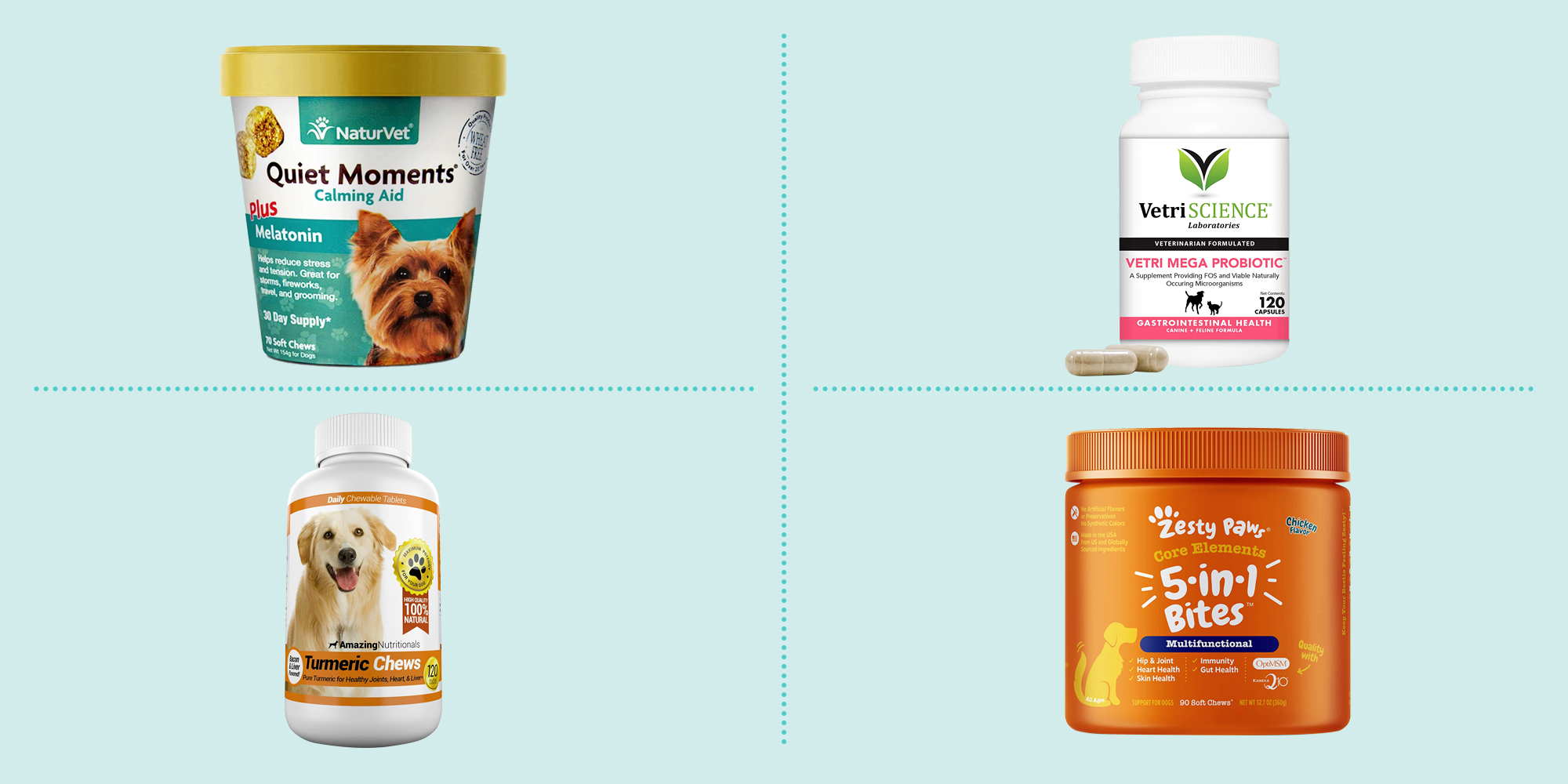
In today’s consumer-driven market, certain products consistently experience high demand due to their importance in enhancing health and well-being. Understanding the factors driving this demand is essential for businesses aiming to meet consumer needs effectively. Among these highly sought-after items are pet supplements, which play a crucial role in supporting the health and vitality of our beloved animal companions.
Overview of the Pet Supplements Industry – best high-demand products
Pet supplements encompass a diverse range of products formulated to address specific health concerns and nutritional needs in pets, including dogs, cats, and other companion animals. These supplements often contain vitamins, minerals, herbs, and other active ingredients designed to support various aspects of pet health, such as joint function, skin and coat health, digestive health, and overall immunity.
Popular Pet Supplements
The market for pet supplements includes a wide array of products tailored to different pet species, breeds, ages, and health conditions. Some of the most popular types of pet supplements include joint supplements containing glucosamine and chondroitin for mobility support, omega-3 fatty acid supplements for skin and coat health, probiotics for digestive health, and multivitamins for overall well-being.
Trends in Pet Supplements
The pet supplements industry is continually evolving, driven by trends such as the humanization of pets, increased awareness of pet health and nutrition, and the desire for natural and holistic products. Pet owners are increasingly seeking supplements that address specific health concerns and are formulated with high-quality, natural ingredients.
Factors Contributing to High Demand
Several factors contribute to the high demand for pet supplements, including the growing pet population, rising pet healthcare costs, increased pet longevity, and the human-animal bond. Pet owners view supplements as a proactive way to support their pets’ health and well-being, leading to sustained demand for these products.
Global Market Analysis
The demand for pet supplements varies across regions, influenced by factors such as pet ownership rates, cultural attitudes towards pets, and economic conditions. Developed markets such as North America and Europe account for a significant portion of global sales, but emerging markets in Asia Pacific and Latin America are experiencing rapid growth as pet ownership increases.
Challenges in the Pet Supplements Industry
Despite its growth and profitability, the pet supplements industry faces challenges such as regulatory compliance, quality control, and competition from traditional pet care products and alternative therapies. Brands must navigate these challenges while maintaining transparency, trust, and credibility with consumers.
Innovations and Technologies
Advancements in research, ingredient sourcing, and product formulation drive innovation in the pet supplements industry. From novel ingredients backed by scientific research to innovative delivery formats such as chews, powders, and liquids, brands are continually innovating to meet the evolving needs and preferences of pet owners.
Consumer Preferences and Behavior
Consumer preferences in pet supplements are influenced by factors such as ingredient quality, product efficacy, brand reputation, and affordability. Pet owners are increasingly educated and discerning, seeking supplements that are backed by scientific evidence, manufactured with high-quality ingredients, and endorsed by veterinarians.
Marketing Strategies
Marketing plays a crucial role in driving demand for pet supplements, with strategies ranging from veterinary recommendations and influencer partnerships to digital advertising and educational content. Building brand awareness, establishing trust, and providing value-added services are essential for brands to succeed in a competitive market.
Impact of COVID-19
The COVID-19 pandemic has had mixed effects on the pet supplements industry. While pet ownership has surged during lockdowns, supply chain disruptions and economic uncertainty have affected consumer spending habits. Brands have adapted by focusing on e-commerce, digital marketing, and product innovation to meet changing consumer needs.
Future Outlook
Looking ahead, the pet supplements industry is poised for continued growth, driven by factors such as increasing pet ownership, rising pet healthcare costs, and growing consumer awareness of pet health and nutrition. Brands that innovate, adapt to changing market dynamics, and prioritize pet health and well-being will thrive in this dynamic and evolving industry.
Read About: Top Best Action Movies All Time In The World
Supplements and probiotics – best high-demand products
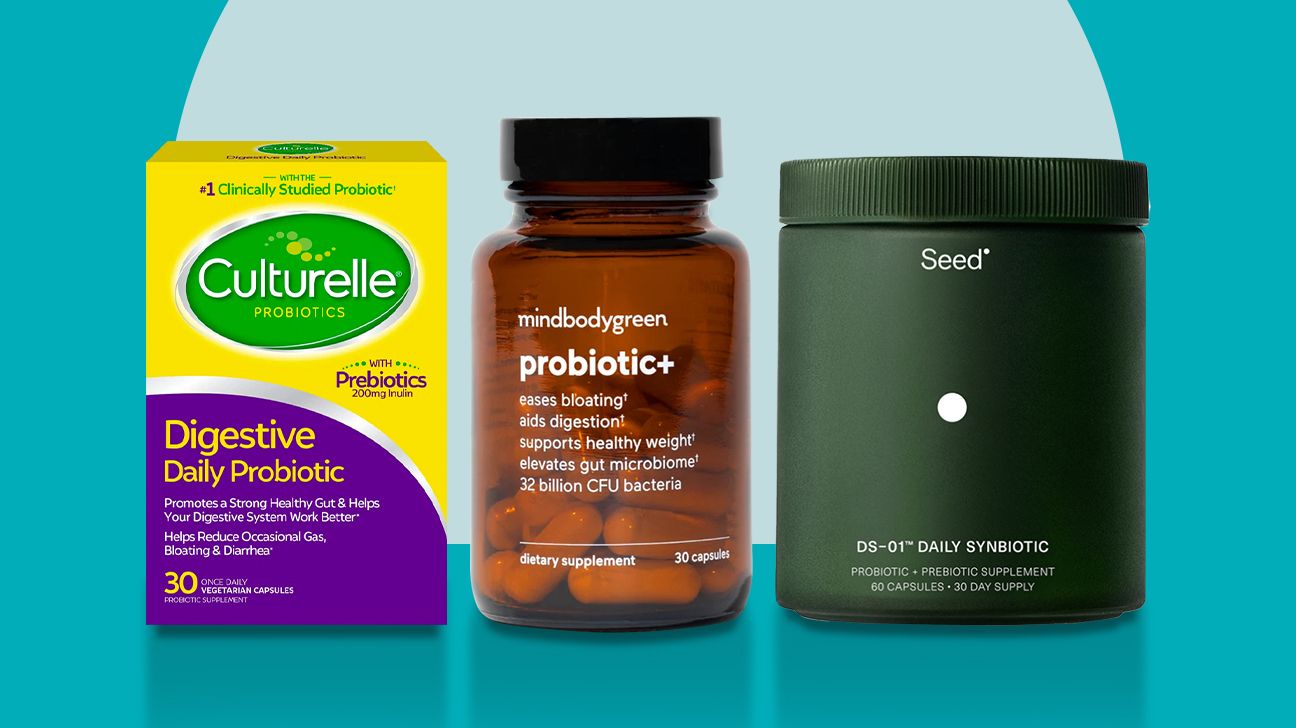
In today’s health-conscious society, the demand for supplements and probiotics continues to soar as people seek ways to support their overall well-being and maintain a healthy lifestyle. Understanding the factors driving this demand is essential for businesses operating in the health and wellness industry. From vitamins and minerals to beneficial bacteria, these products play a vital role in optimizing health and vitality.
Overview of Supplements and Probiotics
Supplements encompass a wide range of products designed to provide essential nutrients, fill nutritional gaps, and support specific health goals. They come in various forms, including capsules, tablets, powders, and liquids, and may contain vitamins, minerals, herbal extracts, amino acids, or other bioactive compounds. Probiotics, on the other hand, are live microorganisms that confer health benefits when consumed in adequate amounts, primarily by supporting digestive and immune health.
Popular Types of Supplements
The supplement market is diverse, catering to various health needs and preferences. Some of the most popular types of supplements include multivitamins, omega-3 fatty acids, vitamin D, calcium, magnesium, and antioxidants. These supplements are often taken to address deficiencies, promote overall health, or support specific functions such as heart health, bone health, or cognitive function.
Benefits of Probiotics
Probiotics are gaining popularity for their role in promoting gut health and overall well-being. They help maintain a healthy balance of beneficial bacteria in the gut, support digestion and nutrient absorption, and strengthen the immune system. Probiotics may also have additional benefits such as reducing inflammation, supporting mental health, and improving skin conditions.
Trends in Supplements and Probiotics
The supplement and probiotics industry is continually evolving, driven by trends such as personalized nutrition, natural and organic products, and scientific advancements in ingredient formulation and delivery systems. Consumers are increasingly seeking supplements and probiotics tailored to their individual needs, preferences, and health goals.
Factors Contributing to High Demand
Several factors contribute to the high demand for supplements and probiotics, including growing consumer awareness of preventive health, aging populations seeking to maintain vitality and mobility, and the increasing prevalence of chronic health conditions. Additionally, lifestyle factors such as poor diet, stress, and environmental toxins contribute to the need for nutritional support.
Global Market Analysis
The demand for supplements and probiotics varies across regions, influenced by factors such as population demographics, healthcare infrastructure, and cultural attitudes towards health and wellness. Developed markets such as North America and Europe dominate global sales, but emerging markets in Asia Pacific and Latin America are experiencing rapid growth due to increasing disposable incomes and rising health awareness.
Challenges in the Industry
Despite its growth and profitability, the supplements and probiotics industry faces challenges such as regulatory scrutiny, quality control, and consumer skepticism towards product claims. Brands must navigate these challenges while maintaining transparency, credibility, and trust with consumers.
Innovations and Technologies
Advancements in research, technology, and manufacturing processes drive innovation in the supplements and probiotics industry. From novel ingredient discoveries to innovative delivery formats such as time-release capsules and probiotic-infused foods, brands are continually striving to improve product efficacy, bioavailability, and consumer convenience.
Consumer Preferences and Behavior
Consumer preferences in supplements and probiotics are influenced by factors such as ingredient quality, product efficacy, brand reputation, and affordability. Consumers are increasingly educated and discerning, seeking products backed by scientific evidence, manufactured with high-quality ingredients, and endorsed by healthcare professionals.
Marketing Strategies
Marketing plays a crucial role in driving demand for supplements and probiotics, with strategies ranging from educational content and influencer partnerships to digital advertising and product endorsements. Building consumer trust, providing credible information, and delivering value-added solutions are essential for brands to succeed in a competitive market.
Impact of COVID-19
The COVID-19 pandemic has heightened consumer awareness of health and immunity, leading to increased interest in supplements and probiotics. Brands have adapted by focusing on e-commerce, digital marketing, and immune health messaging to meet changing consumer needs and preferences.
Future Outlook
Looking ahead, the supplements and probiotics industry is poised for continued growth, driven by factors such as increasing health consciousness, aging populations, and scientific advancements in nutritional science. Brands that innovate, adapt to changing market dynamics, and prioritize consumer health and well-being will thrive in this dynamic and evolving industry.
Read About: Top Best Cricket Player All Time In The World
Toys
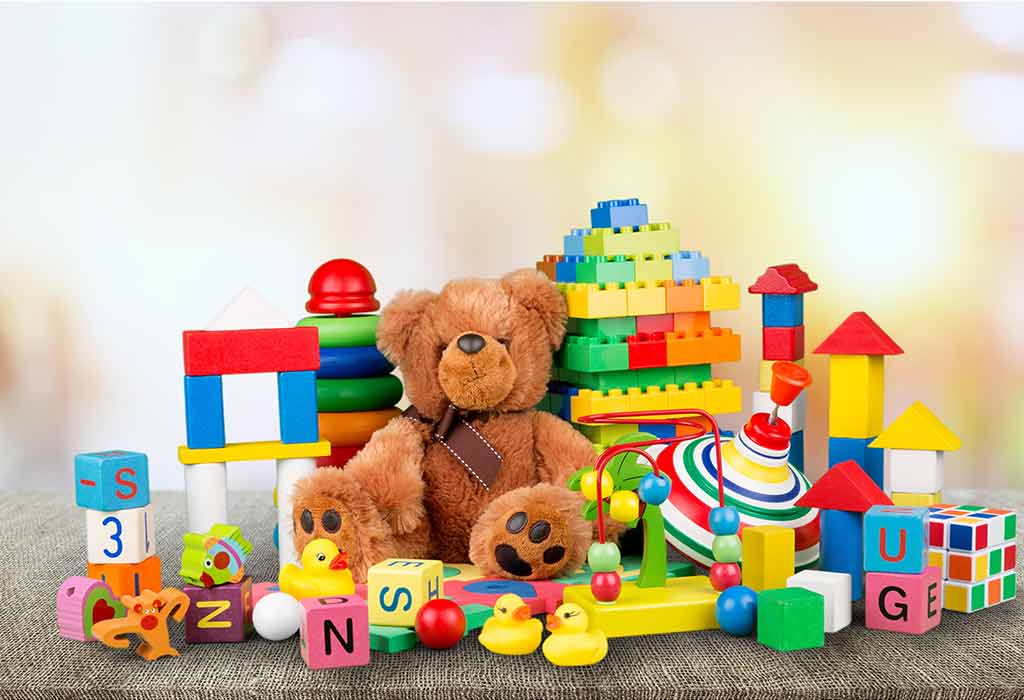
Toys hold a special place in the hearts of people worldwide, bringing joy, entertainment, and developmental benefits to children of all ages. Understanding the factors driving the demand for toys is essential for businesses in the toy industry. From classic favorites to innovative new releases, toys continue to captivate audiences and maintain their status as high-demand products globally.
Overview of the Toy Industry – best high-demand products
The toy industry encompasses a vast array of products designed to engage, educate, and entertain children. From plush animals and building blocks to electronic gadgets and board games, toys come in various forms, catering to diverse interests, ages, and developmental stages. The industry is characterized by creativity, innovation, and the enduring appeal of play.
Popular Types of Toys
Within the toy industry, several categories consistently rank among the most sought-after by consumers. These include traditional toys such as dolls, action figures, cars, trains, and puzzles, as well as modern toys like electronic devices, STEM (science, technology, engineering, and mathematics) toys, and interactive learning aids. Each type of toy offers unique benefits and experiences for children to explore and enjoy.
Trends in Toys
The toy industry is dynamic, with trends evolving to reflect changes in technology, culture, and consumer preferences. Recent trends include a focus on educational and STEM-based toys to support learning and skill development, nostalgia-driven reissues of classic toys, and toys that encourage creativity, imagination, and social interaction. Additionally, licensed toys based on popular characters from movies, TV shows, and video games remain perennial favorites among children and collectors alike.
Factors Contributing to High Demand
Several factors contribute to the ongoing demand for toys worldwide. These include demographic trends such as population growth and rising birth rates, the importance of play in child development, parental spending habits, and the influence of media and advertising. Additionally, holidays, birthdays, and special occasions drive seasonal spikes in toy sales, making them a staple in gift-giving traditions.
Global Market Analysis
The demand for toys varies across regions, influenced by factors such as cultural preferences, economic conditions, and regulatory environments. Developed markets such as North America, Europe, and Asia Pacific lead global toy sales, but emerging markets in Latin America, the Middle East, and Africa present growth opportunities due to increasing disposable incomes and urbanization.
Challenges in the Toy Industry
Despite its growth and resilience, the toy industry faces challenges such as changing consumer preferences, competition from digital entertainment and screen-based activities, and supply chain disruptions. Brands must innovate, adapt, and differentiate themselves to remain relevant and competitive in a rapidly evolving market.
Innovations in Toys
Advancements in technology, materials, and design drive innovation in the toy industry, leading to the development of toys that are more interactive, educational, and immersive than ever before. From augmented reality and robotics to eco-friendly materials and customizable options, brands are continually pushing the boundaries of what toys can offer in terms of entertainment, engagement, and educational value.
Consumer Preferences and Behavior
Consumer preferences in toys are influenced by factors such as age, gender, interests, and parental values. Parents seek toys that are safe, durable, and age-appropriate, while children gravitate towards toys that capture their imagination, stimulate their senses, and provide opportunities for exploration and discovery. Brands that understand and cater to these preferences can build strong connections with their target audience and foster brand loyalty over time.
Marketing Strategies
Marketing plays a crucial role in driving demand for toys, with strategies ranging from traditional advertising and product placements to influencer partnerships and experiential marketing events. Building brand awareness, generating buzz around new releases, and creating engaging content that resonates with both parents and children are key to successful toy marketing campaigns.
Impact of COVID-19
The COVID-19 pandemic has had a significant impact on the toy industry, with changes in consumer behavior, supply chain disruptions, and shifts in demand patterns. While traditional toy retailers faced challenges due to store closures and reduced foot traffic, online sales surged as families turned to e-commerce for their shopping needs. Additionally, toys that offered educational value, outdoor play opportunities, and entertainment at home saw increased demand during lockdowns.
Future Outlook
Looking ahead, the toy industry is poised for continued growth and innovation, driven by factors such as technological advancements, changing consumer preferences, and the enduring appeal of play. Brands that embrace digital transformation, sustainability initiatives, and inclusivity in their product offerings will thrive in a competitive and dynamic market.
Read About: Top Best Football Players All Time In The World
Phone accessories – best high-demand products
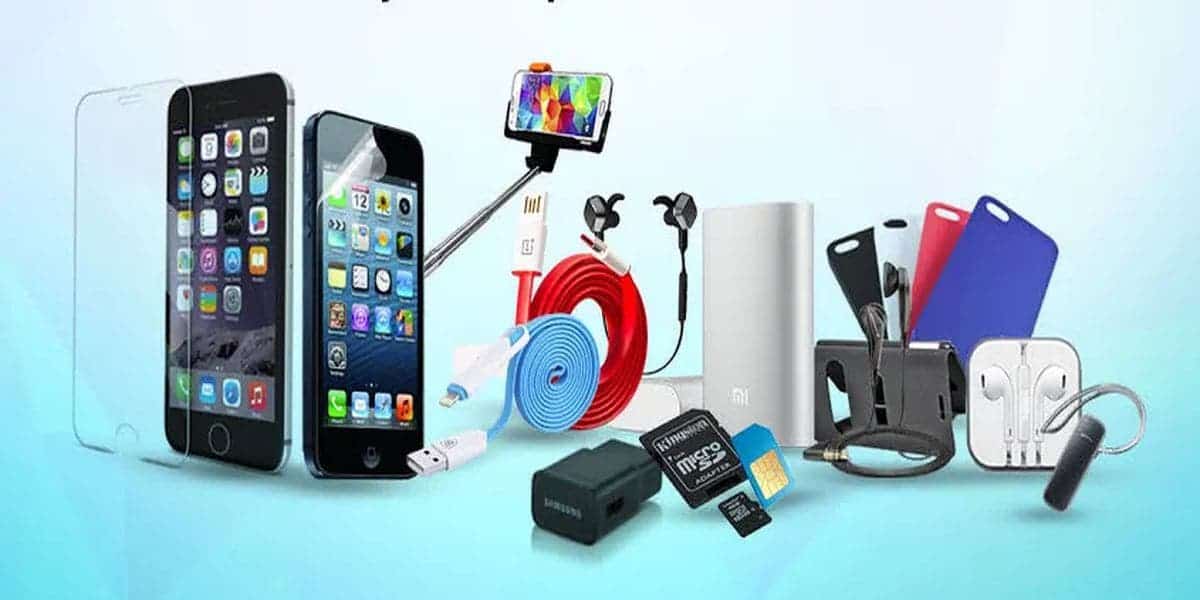
In the modern digital age, smartphones have become an indispensable part of daily life, and with them, the demand for phone accessories has skyrocketed. Understanding the factors driving this demand is crucial for businesses operating in the mobile accessories market. From protective cases to chargers and headphones, phone accessories offer convenience, functionality, and personalization to smartphone users worldwide.
Overview of Phone Accessories
Phone accessories encompass a wide range of products designed to enhance the usability, protection, and aesthetics of smartphones. These accessories include protective cases, screen protectors, chargers, power banks, headphones, earphones, selfie sticks, pop sockets, and more. Each accessory serves a specific purpose, catering to the diverse needs and preferences of smartphone users.
Popular Phone Accessories
Among the most popular phone accessories are protective cases, which offer protection against drops, scratches, and other damage, while also allowing users to personalize their devices with unique designs and colors. Screen protectors are another essential accessory, providing an additional layer of defense against scratches and cracks without compromising touchscreen sensitivity.
Chargers and power banks are indispensable accessories for users on the go, ensuring that smartphones remain powered throughout the day. Headphones and earphones offer immersive audio experiences, allowing users to enjoy music, podcasts, and videos with clarity and convenience.
Trends in Phone Accessories
The mobile accessories market is dynamic, with trends evolving to reflect changes in technology, fashion, and consumer preferences. Recent trends include wireless charging solutions, eco-friendly and sustainable materials, and accessories that integrate additional features such as LED lights, built-in stands, or magnetic attachments.
Factors Contributing to High Demand
Several factors contribute to the high demand for phone accessories worldwide. These include the increasing adoption of smartphones, the desire for personalization and customization, frequent upgrades and replacements of devices, and the growing importance of accessories in enhancing user experience and functionality.
Global Market Analysis
The demand for phone accessories varies across regions, influenced by factors such as smartphone penetration rates, consumer demographics, and economic conditions. Developed markets such as North America, Europe, and Asia Pacific lead global sales, but emerging markets in Latin America, Africa, and the Middle East present growth opportunities due to rising smartphone adoption and disposable incomes.
Challenges in the Industry
Despite its growth and profitability, the phone accessories industry faces challenges such as competition from counterfeit products, price pressures, and supply chain disruptions. Brands must innovate, differentiate, and maintain brand integrity to stand out in a crowded market and meet the evolving needs of smartphone users.
Innovations in Phone Accessories
Advancements in technology drive innovation in the phone accessories market, leading to the development of accessories that offer enhanced functionality, durability, and user experience. From wireless charging pads to waterproof cases and noise-canceling headphones, brands are continually pushing the boundaries of what phone accessories can offer in terms of convenience and utility.
Consumer Preferences and Behavior
Consumer preferences in phone accessories are influenced by factors such as brand reputation, product quality, design aesthetics, and compatibility with their devices. Users seek accessories that not only offer protection and functionality but also reflect their personal style and preferences. Brands that understand and cater to these preferences can build strong brand loyalty and customer relationships.
Marketing Strategies
Marketing plays a crucial role in driving demand for phone accessories, with strategies ranging from digital advertising and influencer partnerships to retail promotions and product placements. Building brand awareness, highlighting product features and benefits, and engaging with consumers through social media and other channels are key to successful marketing campaigns.
Impact of COVID-19
The COVID-19 pandemic has had mixed effects on the phone accessories industry. While lockdowns and economic uncertainty initially led to a slowdown in consumer spending, the shift towards remote work and online communication increased demand for accessories such as webcams, microphones, and wireless headphones. Additionally, the rise of e-commerce and contactless payments accelerated digital transformation and omnichannel retail strategies in the industry.
Future Outlook
Looking ahead, the phone accessories industry is poised for continued growth and innovation, driven by factors such as technological advancements, changing consumer lifestyles, and the increasing integration of smartphones into everyday activities. Brands that innovate, adapt to market trends, and prioritize customer needs will thrive in a competitive and dynamic market landscape.
Read About: Top Best PC Games All Time In The World
Coffee products
In today’s global marketplace, certain products stand out for their consistent high demand. Among these, coffee products hold a significant place. From morning pick-me-ups to social gatherings, coffee has become an integral part of daily life for millions worldwide.
Overview of the Coffee Industry – best high-demand products
The coffee industry has experienced exponential growth over the years, fueled by its widespread popularity and cultural significance. What was once a simple beverage has evolved into a thriving market encompassing various products and accessories.
Coffee Beans: The Foundation
At the heart of every coffee product lies the humble coffee bean. With different types and origins, coffee beans offer a diverse range of flavors and profiles, catering to various preferences.
Popular Coffee Products
- Espresso Machines: These countertop marvels allow enthusiasts to brew cafe-quality espresso at home, offering convenience and customization.
- Specialty Coffee Blends: Crafted from premium beans, specialty coffee blends offer a unique taste experience, often highlighting specific flavor notes.
- Single-Origin Coffee: Celebrating the distinct characteristics of beans from a particular region, single-origin coffee appeals to connoisseurs seeking authenticity.
Trending Coffee Accessories
- Coffee Grinders: Essential for achieving optimal flavor, coffee grinders ensure freshness and consistency in every brew.
- Milk Frothers: For those who enjoy creamy textures in their coffee, milk frothers provide the perfect foam for lattes and cappuccinos.
- Travel Mugs: Designed for on-the-go convenience, travel mugs keep coffee hot and readily accessible for busy lifestyles.
The Rise of Cold Brew
Cold brew coffee has surged in popularity, offering a refreshing alternative to traditional hot beverages. Its smooth, bold flavor and lower acidity make it a favorite among discerning coffee drinkers.
Sustainable and Eco-Friendly Coffee Products
As environmental awareness grows, so does the demand for sustainable coffee products. From ethically sourced beans to biodegradable packaging, consumers seek eco-friendly options that minimize their ecological footprint.
Health-Conscious Coffee Options
- Low-Acid Coffee: Ideal for individuals with sensitive stomachs, low-acid coffee provides a gentler alternative without sacrificing flavor.
- Organic Coffee: Produced without synthetic pesticides or fertilizers, organic coffee appeals to health-conscious consumers seeking natural, chemical-free options.
Artisanal and Craft Coffee Trends
Embracing artisanal craftsmanship, craft coffee trends emphasize quality, authenticity, and innovation. From unique flavor profiles to experimental brewing methods, artisanal coffee offers a sensory journey for enthusiasts.
The Impact of Technology on Coffee Products
Innovations in technology have revolutionized the coffee industry, introducing smart appliances and subscription services that cater to modern lifestyles. Smart coffee makers and curated subscription plans streamline the brewing process, offering convenience and customization at the touch of a button.
The Role of Marketing in Driving Demand
Effective branding and storytelling play a pivotal role in shaping consumer perceptions and driving demand for coffee products. From iconic logos to compelling narratives, successful marketing campaigns resonate with audiences, fostering brand loyalty and engagement.
Global Consumption Patterns
Regional preferences and cultural influences contribute to diverse consumption patterns across the globe. While some regions favor strong, dark roasts, others prefer lighter, fruitier profiles, reflecting the rich tapestry of coffee culture worldwide.
Challenges in the Coffee Industry
Despite its widespread popularity, the coffee industry faces various challenges, including sustainability issues and market saturation. Balancing supply chain efficiency with ethical sourcing practices remains a constant concern for stakeholders.
Future Trends and Innovations
Innovations in flavor profiles, brewing techniques, and sustainability initiatives are expected to shape the industry’s trajectory, catering to evolving consumer preferences and lifestyles.
Read About: Top Best Rich Man All Time In The World
Makeup – best high-demand products

High demand products are those items that consistently attract significant consumer interest and sales. In the world of cosmetics, makeup products stand out as one of the most sought-after categories, catering to a diverse range of preferences and needs.
Overview of the Makeup Industry
The makeup industry has witnessed exponential growth in recent years, fueled by the increasing popularity of beauty culture and the rise of social media influencers. What was once considered a niche market has evolved into a multi-billion-dollar industry, with a wide array of products available to consumers worldwide.
Essential Makeup Products
- Foundation and Concealer: Foundation and concealer serve as the base for creating a flawless complexion, providing coverage for imperfections and uneven skin tone.
- Mascara and Eyeliner: Mascara and eyeliner enhance the eyes, adding definition and volume to lashes and creating captivating looks.
- Lipstick and Lip Gloss: Lipstick and lip gloss add color and dimension to the lips, completing makeup looks and expressing individual style.
Trending Makeup Products
- Highlighters and Contour Kits: Highlighters and contour kits allow users to sculpt and define facial features, creating dimension and luminosity.
- Eyebrow Products: Eyebrow products, such as pencils and gels, help shape and fill in brows, framing the face and enhancing natural beauty.
- Setting Sprays and Primers: Setting sprays and primers prolong the wear of makeup, ensuring long-lasting results and a smooth, flawless finish.
Makeup Tools and Accessories
- Makeup Brushes and Sponges: High-quality makeup brushes and sponges are essential for precise application and blending, enabling users to achieve professional-looking results.
- Makeup Organizers: Makeup organizers help keep beauty products neat and accessible, maximizing space and efficiency.
- LED Mirrors: LED mirrors provide optimal lighting for makeup application, ensuring accurate color representation and visibility.
Sustainable and Cruelty-Free Makeup Options
With increasing awareness of ethical and environmental concerns, there is a growing demand for sustainable and cruelty-free makeup options. Brands that prioritize eco-friendly practices and animal welfare resonate with conscientious consumers, driving the adoption of ethical beauty products.
Makeup for Different Skin Types and Tones
Diversity and inclusivity are paramount in the makeup industry, with products tailored to accommodate various skin types and tones. From fair to deep shades, inclusive shade ranges ensure that every individual can find suitable makeup options that complement their unique complexion.
Professional Makeup Brands and Products
Professional makeup brands are favored by makeup artists and beauty enthusiasts alike for their high-performance formulas and versatile products. Trusted by industry professionals, these brands offer a wide range of colors and finishes to cater to diverse makeup needs.
Celebrity-Endorsed Makeup Lines
Celebrity-endorsed makeup lines wield significant influence in the beauty industry, leveraging the star power of renowned personalities to capture consumer attention and drive sales. Collaborations between celebrities and beauty brands often result in highly anticipated product launches and viral marketing campaigns.
The Role of Social Media in Driving Makeup Trends
Social media platforms, particularly Instagram and YouTube, play a pivotal role in shaping makeup trends and influencing consumer behavior. Beauty influencers and content creators showcase new products, share tutorials, and provide product reviews, driving demand for popular makeup items and fueling viral beauty trends.
Global Consumption Patterns
Consumption patterns vary across regions, influenced by cultural norms, beauty standards, and socioeconomic factors. While certain makeup trends may be prevalent in one region, they may not necessarily translate to others, highlighting the diverse nature of global beauty preferences.
Challenges in the Makeup Industry
Despite its immense popularity, the makeup industry faces several challenges, including issues related to inclusivity, diversity, and product integrity. Addressing these challenges requires ongoing efforts from brands, influencers, and consumers to promote inclusivity, combat counterfeit products, and uphold ethical standards.
Future Trends and Innovations
Looking ahead, the makeup market is poised for continued growth and innovation, driven by evolving consumer preferences and technological advancements. Trends such as clean beauty, customizable makeup solutions, and augmented reality experiences are expected to shape the future of the industry, offering new opportunities for brands to engage with consumers and drive sales.
Read About: Top Best Airports All Time In The World
Beverages
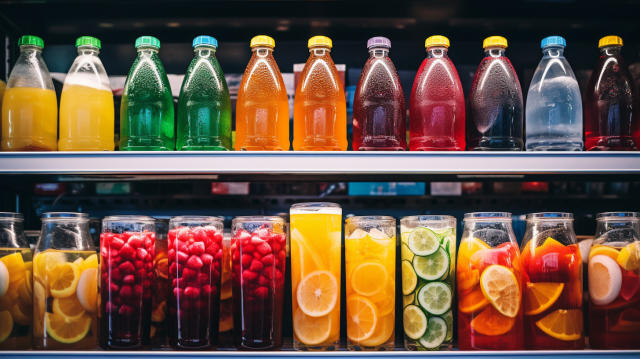
High demand products are items that consistently attract significant consumer interest and sales across various markets. In the beverage industry, a wide array of beverages caters to diverse tastes, preferences, and lifestyles, making it one of the most dynamic sectors in the global economy.
Overview of the Beverage Industry – best high-demand products
The beverage industry encompasses a vast range of products, including non-alcoholic and alcoholic beverages, catering to consumers of all ages and demographics. From everyday refreshments to indulgent treats, beverages play a central role in social gatherings, daily routines, and cultural traditions worldwide.
Popular Beverages Worldwide
- Coffee and Tea: Coffee and tea remain perennial favorites, enjoyed for their rich flavors, caffeine content, and comforting qualities. From traditional brews to specialty blends, coffee and tea offer a diverse range of options for consumers to explore.
- Carbonated Soft Drinks: Despite health concerns surrounding sugary beverages, carbonated soft drinks continue to enjoy widespread popularity, with iconic brands and innovative flavors appealing to consumers of all ages.
- Bottled Water: With an increasing emphasis on hydration and wellness, bottled water has become a staple in modern lifestyles, offering convenient and portable options for staying hydrated on the go.
Trending Beverage Categories
- Functional Beverages: Functional beverages, such as energy drinks and sports drinks, are gaining traction among health-conscious consumers seeking added benefits like energy boosts, hydration, and enhanced performance.
- Plant-Based Alternatives: Plant-based beverages, including almond milk, oat milk, and coconut water, cater to consumers looking for dairy-free and vegan-friendly options that align with their dietary preferences and values.
- Craft and Artisanal Beverages: Craft sodas, artisanal juices, and small-batch brews appeal to discerning consumers seeking unique flavor profiles, premium ingredients, and authentic craftsmanship.
Health-Conscious Beverage Options
- Low-Sugar and Zero-Calorie Drinks: With growing awareness of the health risks associated with excessive sugar consumption, low-sugar and zero-calorie beverages offer guilt-free alternatives for consumers looking to reduce their sugar intake while still enjoying flavorful drinks.
- Hydration and Electrolyte Beverages: Hydration-focused beverages infused with electrolytes, vitamins, and minerals appeal to active individuals and fitness enthusiasts seeking replenishment and hydration support during workouts and outdoor activities.
- Immunity-Boosting Drinks: Beverages fortified with immune-boosting ingredients such as vitamins, antioxidants, and probiotics cater to consumers looking to support their immune system and overall well-being.
Alcoholic Beverages: Trends and Preferences
- Beer, Wine, and Spirits: Alcoholic beverages remain popular choices for socializing and relaxation, with beer, wine, and spirits offering a wide range of flavors, styles, and cultural traditions to explore.
- Craft Beer and Microbreweries: The craft beer movement continues to gain momentum, with craft breweries and microbreweries producing innovative and high-quality brews that appeal to beer enthusiasts seeking unique taste experiences.
- Premium and Luxury Spirits: Premium and luxury spirits, including aged whiskies, artisanal gins, and craft cocktails, cater to discerning consumers willing to invest in quality, craftsmanship, and exclusivity.
Sustainable and Eco-Friendly Beverage Choices
As environmental awareness grows, consumers are increasingly seeking sustainable and eco-friendly beverage options that minimize environmental impact and promote responsible sourcing, production, and packaging practices.
Innovative Packaging Solutions
Innovations in packaging design and materials aim to reduce waste, improve recyclability, and enhance convenience for consumers. From eco-friendly packaging alternatives to single-serve formats, packaging solutions play a crucial role in shaping consumer perceptions and purchasing decisions.
Global Consumption Patterns
Consumption patterns vary significantly across regions, influenced by cultural traditions, dietary habits, and socioeconomic factors. While certain beverages may enjoy widespread popularity in one region, they may remain niche or unfamiliar in others, highlighting the diversity of global beverage preferences.
Challenges in the Beverage Industry
Despite its resilience and adaptability, the beverage industry faces various challenges, including health concerns surrounding sugary beverages, regulatory scrutiny, supply chain disruptions, and environmental sustainability issues. Addressing these challenges requires collaboration and innovation across the industry to ensure the continued growth and sustainability of the beverage market.
Future Trends and Innovations
Looking ahead, the beverage market is poised for continued innovation and evolution, driven by changing consumer preferences, technological advancements, and regulatory developments. Trends such as functional beverages, plant-based alternatives, and sustainable packaging solutions are expected to shape the future of the industry, offering new opportunities for growth and differentiation.
Read About: Top Best Largest Cities All Time In The World
Eco products – best high-demand products
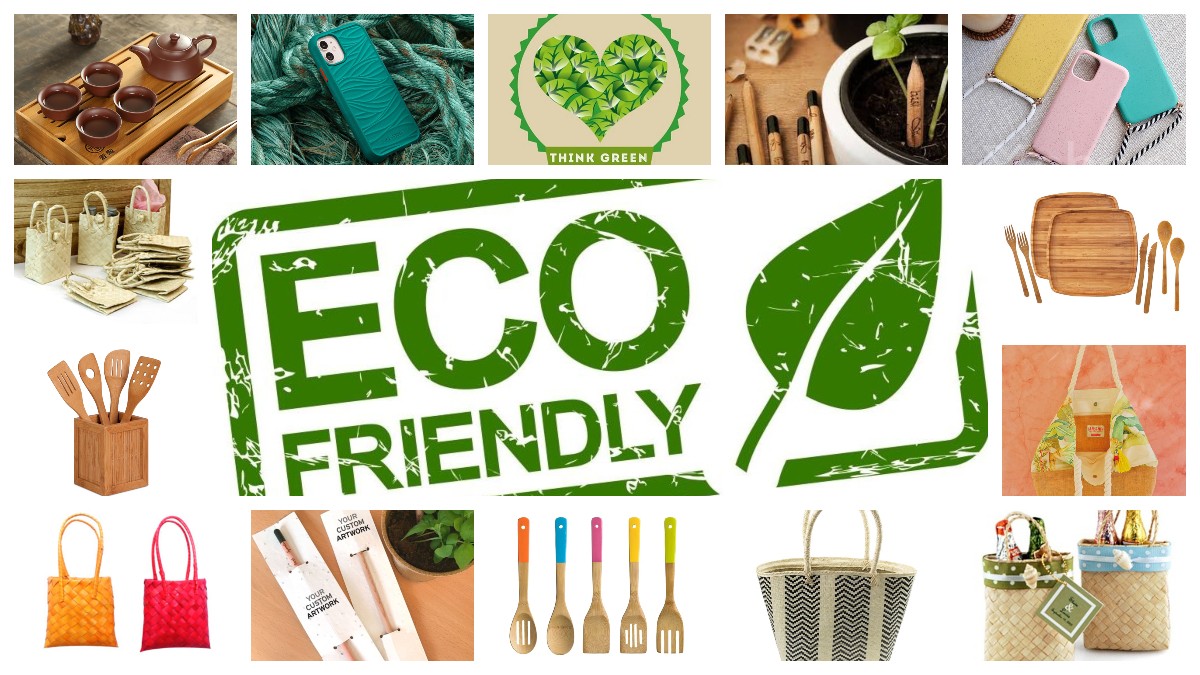
In recent years, there has been a significant rise in demand for eco products, driven by growing environmental consciousness and a desire for sustainable living. Eco products are items that are designed and manufactured with minimal environmental impact, promoting practices that conserve resources and reduce pollution.
Overview of the Eco Products Industry
The eco products industry encompasses a diverse range of goods and services, catering to consumers seeking environmentally friendly alternatives across various sectors. From household essentials to personal care items, fashion, technology, and beyond, eco products offer sustainable solutions for everyday living.
Eco-Friendly Personal Care Items
- Organic Skincare and Beauty Products: Natural ingredients, cruelty-free formulations, and recyclable packaging are hallmarks of eco-conscious skincare and beauty brands committed to sustainability and ethical practices.
- Biodegradable Hygiene Products: Bamboo toothbrushes, compostable menstrual products, and eco-friendly diapers reduce plastic waste and environmental pollution, offering greener alternatives for personal hygiene needs.
- Natural Grooming Essentials: Organic shampoos, conditioners, and grooming products free from harmful chemicals and synthetic fragrances promote healthier hair and skin without compromising environmental integrity.
Green Fashion and Apparel
- Sustainable Clothing Brands: Eco-friendly fashion labels prioritize ethical sourcing, fair labor practices, and environmentally sustainable production methods, offering stylish clothing options made from organic, recycled, or upcycled materials.
- Eco-Friendly Footwear: Vegan shoes, sustainable sneakers, and ethically made sandals crafted from eco-friendly materials like recycled plastics, organic cotton, and hemp minimize environmental impact while prioritizing comfort and style.
- Recycled Accessories: Upcycled handbags, jewelry, and accessories made from repurposed materials such as reclaimed leather, recycled metals, and salvaged fabrics offer unique, eco-friendly fashion statements with a reduced ecological footprint.
Trending Eco Products
- Bamboo-Based Goods: Versatile and sustainable, bamboo products including utensils, furniture, and textiles offer eco-friendly alternatives to conventional materials, thanks to bamboo’s rapid growth and renewability.
- Upcycled and Repurposed Items: Creative reuse of materials such as reclaimed wood, recycled glass, and discarded textiles transforms waste into valuable resources, showcasing the potential for innovative, eco-conscious design.
- Zero-Waste Essentials: Reusable shopping bags, stainless steel straws, and silicone food storage solutions help minimize single-use plastics and promote waste reduction in everyday life, encouraging sustainable habits and environmental stewardship.
Eco-Friendly Technology
- Energy-Saving Gadgets: Smart thermostats, LED light bulbs, and power-saving devices help reduce energy consumption and lower utility costs, contributing to a greener, more sustainable lifestyle.
- Solar-Powered Devices: Solar chargers, outdoor lights, and portable generators harness renewable energy from the sun, providing eco-friendly alternatives to traditional battery-powered or grid-dependent electronics.
- Eco-Conscious Electronics: Recycled materials, modular design, and repairable components are key features of eco-friendly electronics that prioritize longevity, repairability, and recyclability, reducing electronic waste and resource depletion.
Sustainable Food and Beverage Options
- Organic Produce: Locally grown fruits and vegetables produced without synthetic pesticides or fertilizers offer nutritious, environmentally sustainable alternatives to conventional agriculture, supporting soil health and biodiversity.
- Locally Sourced Goods: Farmer’s market finds, artisanal cheeses, and locally sourced meats and dairy products reduce food miles and support local economies while promoting sustainable farming practices and community resilience.
- Plant-Based Alternatives: Vegan foods, meat substitutes, and plant-based protein sources like tofu, tempeh, and legumes offer eco-friendly alternatives to animal products, reducing greenhouse gas emissions, water usage, and land degradation associated with conventional livestock farming.
Global Consumption Patterns
Consumption patterns vary widely across regions, influenced by cultural traditions, economic factors, and environmental awareness. While eco products may enjoy greater demand in environmentally conscious regions, efforts to promote sustainability and eco-conscious consumption are gaining momentum worldwide, driving positive change and fostering a greener, more sustainable future.
Challenges in the Eco Products Industry
Despite growing interest and demand for eco products, the industry faces several challenges, including affordability, accessibility, and greenwashing. Addressing these challenges requires collaboration among stakeholders to promote transparency, education, and innovation in sustainable manufacturing, distribution, and consumption practices.
Future Trends and Innovations
Looking ahead, the eco products market is poised for continued growth and innovation, driven by evolving consumer preferences, technological advancements, and regulatory initiatives. Trends such as circular economy models, regenerative agriculture, and carbon-neutral initiatives are expected to shape the future of the industry, offering new opportunities for sustainable development and environmental stewardship.
Read About: Top Best Big Cities All Time In The World
